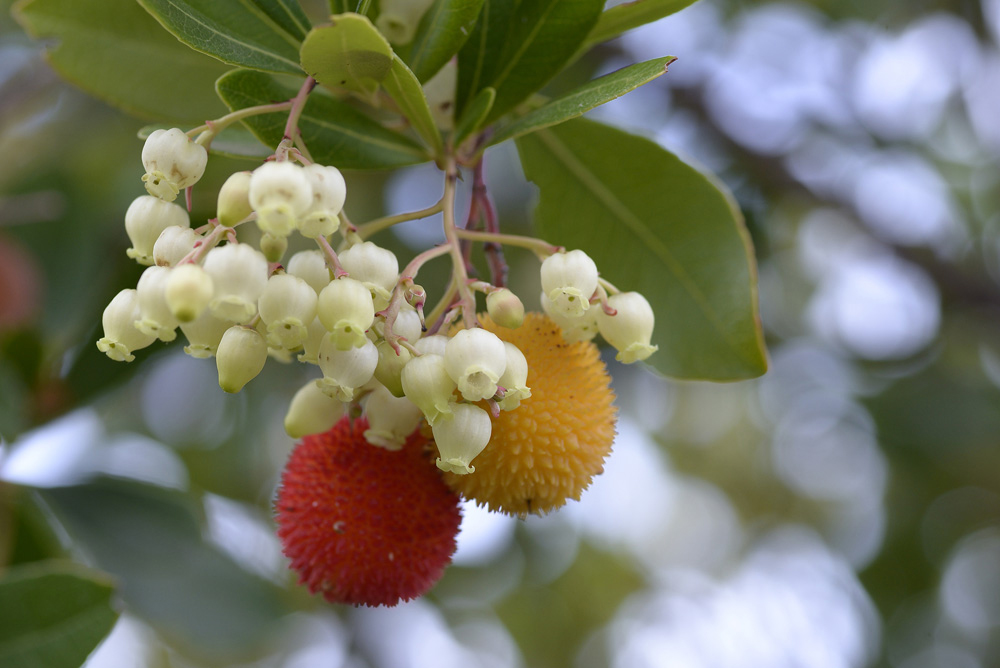Arbutus sp.
Common Name:
Strawberry Tree

General information:
Most often seen as a multi-stemmed, rounded, evergreen shrub or small tree reaching 8 to 15 feet in height with an equal spread. Strawberry Tree is capable of reaching 20 to 25 feet in height, and makes a very attractive specimen tree when pruned to a short, single trunk. The trees take on a picturesque, somewhat twisted appearance over time, and exhibit dark, red/brown, flaking and shreddy bark accompanied by the lush, dark green, leathery, red-stemmed leaves. Growth rate is slow so trees over 20 feet tall are rare. Arbutus species are quite rare in bonsai use, but they adapt well to pot culture. The strawberry tree is an old European native, presumably brought by the Romans from the Mediterranean to England, while the madrone is an American native.
Family:
Ericaceae
Lighting:
Part shade, part sun, full sun, although some afternoon shade in midsummer may be necessary to prevent leaf scorch.
Temperature:
The tree is hardy in zones 8B through 11. The strawberry tree should not be exposed to temperatures below freezing when used for bonsai.
Watering:
Light to moderate, increasing during the heat of summer. Feeding: Every 20-30 days from early spring-mid-autumn, breaking for a month in midsummer. Miracid is recommended.
Pruning and wiring:
Prune new shoots back to 2-3 leaves during growth. Prune above a leaf facing in the direction you want new growth to extend. The flexible branches make wiring easy, although the bark will need to be protected. Wire from spring-autumn.
Propagation:
By seed. Needs three months cold treatment, then requires an additional three months to germinate. I’m still waiting.
Repotting:
Arbutus prefers an acid soil (although unlike most ericaceous plants, it can tolerate lime). 70-80% organic matter is recommended in the soil mix, with only 20-30% inorganic mater such as sand, grit or turface. However, a fast-draining soil is also preferred, so To achieve proper aeration of the soil, bark might be a useful soil component. Repot every 2-3 years in early spring. If the root pruning is drastic, removing all the leaves is suggested.
Pest and diseases:
There are no significant pests or diseases affecting this species.
Some species suitable for bonsai:
Arbutus menziesii: Pacific madrone - Unlike the strawberry tree, the Pacific madrone is a giant, growing upwards of 100 feet, with 2-6 inch leaves and 8 inch flower panicles. Its new shoots are bright green, deepening to orange, and eventually red as the bark thickens. The evergreen leaves are deep green with blue-white undersides, and the tree has red berries.
Arbutus menziesii ‘Pursh’.
Arbutus unedo: strawberry tree, Cain-apple, Cane-apple - Its species name is taken from the Latin phrase “unem edo,” which translates “I eat only one.” Cane-apple is a misnomer; Cain-apple refers to a legend that the berries were clots of Abel’s blood. Despite the fact that the berries look invitingly like strawberries, the fruit is incredibly sour. Supposedly hardy in zones 7-10, but best kept at temperatures above freezing. The strawberry tree is a small tree or bush, depending on the area of growth.
Bibliography:
Gustafson’s “Miniature Bonsai,”
Jahn (ed.) “The Simon and Schuster Guide to Bonsai,” Coats’ “Garden Shrubs and Their Histories.”
Mitchell’s “American Nature Guides: Trees”.
USDA Fact Sheet ST-85
Compiled by Sabrina Caine Edited by Thomas L. Zane
